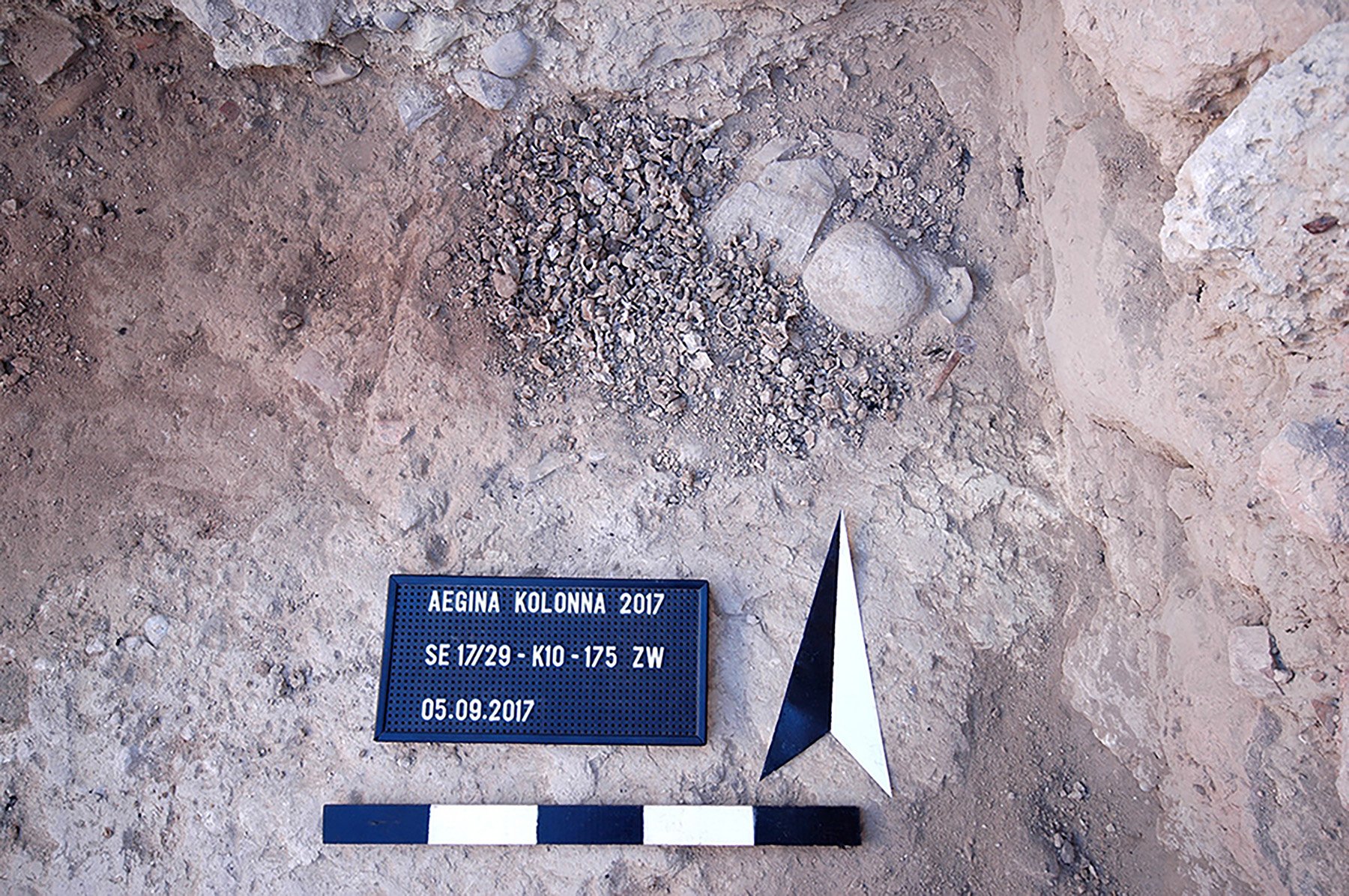
Though small, the island of Aegina on the Saronic Gulf in Greece boasts a rich historical footprint that stretches back millennia. The island’s main settlement, Kolonna, was established on the island’s northwestern coast in the Early Bronze Age, built and fortified with stone. It experienced a cultural and economic heyday from around 2000 B.C.E., evidenced by finds including sumptuous graves, Minoan ceramics, and gold jewelry, most famously the Aegina Treasure.
A recent excavation by researchers from the Paris Lodron University of Salzburg has found that the prehistoric settlement was also the site of purple dye production—and not just any purple dye, but Tyrian purple, a hue once highly prized and priced.
Aerial view of Aegina Kolonna, with the excavation site marked in red. Photo: https://doi.org/10.1371/journal.pone.0304340.
Digs at two early Mycenaean buildings in the eastern suburb of Kolonna have turned up six pottery shards, possibly parts of a jug, still holding well-preserved residues of the pigment. Once tested and compared with existing Tyrian purple samples, the dye was found to be “qualitatively and quantitatively similar,” according to a new study published by the research team.
Also found at the site was a half-foot-deep pit filled with a high amount of crushed shells, mostly of the banded dye-murex sea snail. Among the shell grit were three fist-sized stones, which were likely used to pound the mollusks on a grindstone, also discovered in the building. The burnt bones of young animals in the area further suggests there might have been rituals associated with production of the pigment.
Pottery fragments with purple pigments. Photo: L. Berger, https://doi.org/10.1371/journal.pone.0304340.
The production of Tyrian purple involved capturing the secretions of sea snails, which discharge a single drop of a fluid from their hypobranchial glands as part of their predatory behavior. Once milked, the substance was left to ferment in the sunlight, which would have changed its color from green to purple.
Due to the time-consuming process involved in creating the dye, Tyrian purple was dearly valued, said to be worth three times its weight in gold. During the Bronze Age, it was used on objects from paintings to cloaks, growing associated wealth and royalty, while becoming a highly traded commodity in the Mediterranean region.
Purple pigment sample from one of the pottery fragments. Photo: L. Berger, https://doi.org/10.1371/journal.pone.0304340.
Based on their findings at Kolonna, the archaeologists conclude that they have uncovered a dye-making workshop. “The archaeological evidence,” they wrote, “attests to dye production on site through three indicators: raw material/debris (crushed murex shells), tools/facilities (pounders, grinding stone, waste pit), and finished product (dye pigment).”
While the team cannot estimate the scale of dye production at the settlement, the mixture of trampled shell fragments indicates continuous activity, despite there being no evidence thus far of Tyrian purple-colored objects used or traded on the island.
“The finds,” the researchers wrote, “not only prove the existence of an intra-urban purple-dye workshop, but also provide new insights into the technological and possibly spiritual background of the process.”